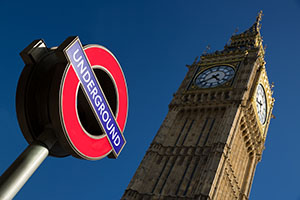On Wednesday November 22nd at 12:30pm GMT, the U.K. Chancellor will present his Budget to Parliament. It’s generally accepted that Philip Hammond botched his first budget last November, announcing a significant and surprise tax increase for the self-employed. He then immediately drew criticism from conservative supporters and his fellow M.P.s, who were both angered and baffled that he’d punish a section of their core voter base; small business operators, during times of continued austerity. Apparently the increase was not discussed with other cabinet ministers and in an embarrassing climb-down, the intended policy was quickly abandoned a few days later.
Generally regarded as fiscally hawkish, Hammond appears to have very little slack to deliver any promises in relation to spending pledges of any substance, other than housing. Despite previous promises to increase social home building, the conservatives oversaw the lowest yearly council home build on record in 2016 of circa 5,500 and with approx. 13,000 homes sold off under the right to buy scheme, this left a significant housing deficit YoY.
As an emotive subject and vote winner we can expect news on increased private house building, by circa 300,000 a year, with subsequent indirect support for house builders through an extension of the government help to buy scheme. This scheme allows first time buyers to buy new homes with part loans from the government, resulting in a circa 25% increase in the cost of new homes since its inception from April 2013. Good news for voters who bought at the start, but a struggle for young families having to take out ever increasing debt to buy.
With recent U.K. quarterly growth at 0.4% and an annual growth rate of 1.5%, predicted to fall to 1.4% or less in 2017, the omens for an economy heading into Brexit aren’t promising. But with the budget deficit forecast to reduce by circa £7b in 2017, technically Hammond does have breathing space to engineer some giveaways in the budget. However, the deficit is forecast to rise in 2020 by £10b and the most recent MoM figures, released on Tuesday 21st, missed the forecast by approx. £500b.
Hammond is expected to find money for the public sector workforce by relaxing the pay freeze, but any rises will probably still fall under the 3% inflation rate, he’s also expected to reduce the six week waiting time universal credit welfare recipients are currently experiencing. Despite facing a £4b shortfall, the NHS is unlikely to receive more cash, neither are schools, as the Tories believe schools are performing well under current constraints. Students may see the threshold at which they pay back their student loan raised to £25,000.
As always, tax on alcohol and tobacco will probably rise, but the intended tax rise on fuel will probably remain frozen, as it has done since 2010, this will cost £750m a year. Hammond could finish with the good news of raising personal tax allowance to £12,500, meaning that the poorest workers’ pay less, but would be entitled to less in work benefits.
Historically the value of the pound has occasionally whipsawed dramatically, versus its main peers, when budget statements are delivered. Generally U.K. budgets are regarded as bullish for the pound and this budget may induce a similar pattern, in terms of setting an optimistic tone. But it must be noted that Hammond’s remit is fiscal policy, the independent BoE engineer’s monetary policy, Hammond has no control over Q.E., or interest rates. Therefore any major spikes in the value of the pound, due to a surprising announcement, are unlikely. However, sterling cross traders should remain vigilant during the budget broadcast and adjust their positions and risk accordingly.
U.K. KEY ECONOMIC INDICATORS
GDP annual growth 1.5%.
GDP quarterly growth 0.4%.
CPI inflation 3%.
Wage growth 2.2%.
Unemployment 4.3%.
Interest rate 0.5%.
Government debt v GDP 89.3%.
Services PMI 55.6.
Retail sales growth YoY -0.3%.

